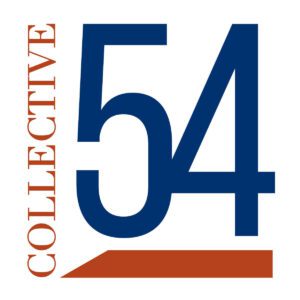As a firm scales, it must make a significant change to its sales strategy. On this episode we discuss how the sales strategy changes at different stages of a firm’s lifecycle.
TRANSCRIPT
Sean Magennis [00:00:15] Welcome to The Boutique with Capital 54, a podcast for owners of professional services firms. My goal with this show is to help you grow scale and sell your firm at the right time for the right price and on the right terms. I am Sean Magennis, CEO of Capital 54 and your host. On this episode, I will make the case that as a firm scales, it must make a significant change to its sales strategy. The sales approach in a small young firm becomes obsolete when scale becomes the focus. I’ll try to prove this theory by interviewing Greg Alexander, Capital 54’s chief investment officer. Greg built the legendary sales team at SBI, which led to record setting scale, you’re in for a treat today. Greg, good to see you and welcome.
Greg Alexander [00:01:15] Sean, my boy, it’s good to be with you. Today’s topic is my favorite thing to talk about. There simply is nothing more important to a professional services firm than the sales strategy.
Sean Magennis [00:01:29] Greg, amen. This topic is the most requested topic from our listeners. I’m thrilled to have you share your knowledge in this area today. Let’s get straight into it. I opened by stating that the sales strategy needs to change when scaling a firm becomes the focus. Can you explain why this is?
Greg Alexander [00:01:50] Sure. So let me frame this up for the audience. So boutiques have a lifecycle. I like to say they grow scale and exit over the course of time. At each lifecycle stage, the sales strategy goes through a dramatic change. For example, during the growth phase, virtually all the selling is done by the founders. In the goal is opening new accounts. During in the scale stage, the selling effort is split between the founders and the employees. In the objective is expansion revenue from existing clients. And during the exit stage, all the selling effort is done by the employees with zero involvement from the founders. The goal in this stage is to prove to a buyer that the firm is not dependent on the founders to grow revenue. So given these dramatic changes in who does the selling in the goal of the selling effort, you can see how the sale strategy must change.
Sean Magennis [00:02:46] OK, I get the framing of the idea sales strategy changes at different stages of a firm’s life cycle. However, I’m not sure I understand why it needs to. Why can’t a founder who is successfully growing his firm just keep doing what he is doing?
Greg Alexander [00:03:06] Because he cannot outhustle the law of big numbers. It is easy to go from one million to three million in revenue. Just close a few big deals and you are there. But it’s very hard to grow from 10 million to 30 million. The amount of deal volume this requires outstrips the capacity of the founder or the founders.
Sean Magennis [00:03:26] Greg, tell me why that is.
Greg Alexander [00:03:28] All right. Let us think about the amount of effort it takes founders to generate enough new business to scale the law of big numbers says the owner needs to get in front of a lot of prospects. This requires a marketing push in time for word of mouth to spread articles get written and published, speeches at conferences get made, podcasts, get produced and books get written, social media accounts get filled with posts. This wider net catches a lot more fish. Yet these fish now need to be qualified. Our peace require well written responses. Competitive bake offs required decks to be created. Sales opportunities must be managed with care. Relationships need to be nurtured. Lots of miles get logged and many Hotelbeds get filled, references need to be contacted, etc.. I’m exhausted just talking about it. Opening new accounts is a lot of effort and is very expensive. If the sales strategy, when trying to scale means doing more of this, it just won’t work. Yet many boutique founders approach to scaling is working harder, not smarter. So they just keep doing this kind of activity and eventually they burn out. This is when revenue growth flatlines.
Sean Magennis [00:04:59] Yep. My my goodness, Greg, now that you lay it out like this, it is obvious that when trying to scale boutiques need to redesign the sales strategy. Greg, what should they do?
Greg Alexander [00:05:12] So let me flip the table and ask you a question, Sean. What is the primary difference between a growth stage firm and a scale a stage firm?
Sean Magennis [00:05:23] Let me think on this. Well, at the risk of stating the obvious, I would say the primary difference is the number of clients and the number of employees,
Greg Alexander [00:05:33] Atta boy. You’re correct. The scale stage firm has more employees and more clients. This means that the sales strategy during scale switches from hunting to farming. The driver behind scaling revenue growth is generating lots and lots of revenue from existing clients. Gone are the days of depending 100 percent on the partners to bring in new clients during the scale stage, boutiques should generate approximately 80 percent of their revenue from existing clients and 20 percent from new clients. This is the complete opposite from the growth stage, whereby it was 80 percent of the revenue from new business and 20 percent from existing clients. And guess who sells to existing clients, it’s the engagement team, not the founders of the boutique. The engagement team is working day to day with the client, building the relationship and uncovering new projects in the process. And the best part is this kind of selling farming is much, much easier. In fact, Salesforce.com recently looked at their customer data and suggested it’s about seven times easier to win a deal from an existing customer than it is from a prospect.
Sean Magennis [00:06:54] Greg, you’re so right. I can speak from experience that this is true. In fact, it might be conservative. Selling to existing happy clients almost is not selling. It just happens so naturally
Greg Alexander [00:07:08] It does.
Sean Magennis [00:07:11] And now a word from our sponsor, Collective 54, Collective 54 is a membership organization for owners of professional services firms. Members joined to work with their industry peers to grow scale and someday sell their firms at the right time for the right price and on the right terms. Let us meet one of the collective 54 members.
Jay Smith [00:07:37] Hello, my name is Jay Smith. I’m the co founder and president of Sales at Security Seven Networks. Security Seven Networks is a managed cyber security service provider. We help our clients protect their businesses and prevent cyber attacks. Our clients rely upon us to protect them from the constantly shifting digital threat landscape. We’re able to do this by providing security thought leadership around compliance and security operations. If you need help protecting your business from cyber security threats, reach out to me at [email protected]
Sean Magennis [00:08:11] If you are trying to grow scale or sell your firm and feel you would benefit from being a part of a community of peers, visit Collective54.com. You know, and unfortunately, we are running out of time and this takes us to the end of this episode, we could discuss the how to portion of this for hours. We will do so on a future episode. Let’s bring this home, Greg. As is customary, we end each show with a tool. We do so because this allows a listener to apply the lessons to his or her firm. Our preferred tool is a checklist and our style of checklist is a yes-no questionnaire. We aim to keep it simple by asking only 10 questions. In this instance, if you answer yes to eight or more of these question, your sales strategy is scaling. If you answer no too many times your sales strategy is more than likely getting in the way of your attempts to scale. Let’s begin.
Sean Magennis [00:09:23] Number one, are you generating a lot of business from existing clients? Number two, have you reduced your need for new clients substantially? Number three, do you understand your share of wallet for your current clients?
Greg Alexander [00:09:44] Just a quick explanation there, share of wallet says client X, Y, Z spends X amount of money on this particular area. What percentage of that spend are you capturing? That’s what share of wallet means.
Sean Magennis [00:09:58] Great point. Great number four are your current clients up to date on your full capabilities?
Greg Alexander [00:10:05] Yeah, this plagued a lot of boutiques.
Sean Magennis [00:10:07] Yep.
Greg Alexander [00:10:07] They bring it out new services and their, quote, legacy clients are unaware of them.
Sean Magennis [00:10:12] Number five, are you investing non billable hours directly into your existing clients?
Greg Alexander [00:10:18] So notice the word investing there.
Sean Magennis [00:10:20] Yes.
Greg Alexander [00:10:21] Many times boutique owners look at their utilization report and they say, hey, we’re 80 percent utilized. We have 20 percent waste. I don’t look at it that way. If the 20 percent of non billable hours is an investment into existing accounts to gen up new business, that’s not a negative. That’s a positive.
Sean Magennis [00:10:35] Yeah, I think that’s golden. Number six, have you redesigned your business development process to prioritize existing clients? Number seven, have you trained your employees on the new business development process? Number eight, are your delivery teams gold and measured on finding new opportunities?
Greg Alexander [00:11:01] Now, this will be controversial. The people that are in the, quote, delivery side, those that are tasked with being on time, on spec, on budget, they’ll say we shouldn’t be gold on finding new sales opportunities. And I disagree. During the scaling stage, their contribution to sales should be recognizing new client opportunities. And they don’t have to close them. You know, they can kick them up to the partner or they can kick them up to the BD person. But it’s their job to have the ears open where when they’re on the client site.
Sean Magennis [00:11:29] Absolutely. And I love your comment that you always make to me. Everybody should carry quota.
Greg Alexander [00:11:33] Yep.
Sean Magennis [00:11:34] Number nine, are the employees who are best at business development, your cultural heroes?
Greg Alexander [00:11:40] So important. So it sends the message, right?
Sean Magennis [00:11:42] Absolutely. And number ten, do you make sure that your current clients know how important they are to you?
Greg Alexander [00:11:50] Never take a client for granted.
Sean Magennis [00:11:52] Absolutely. So in summary, as you scale, life gets easier. You have happy clients, they buy more from you. They refer their friends to you. You win more business as word of mouth spreads the brand, your win rate goes up and your cost to acquire clients goes down. Make sure this is happening at your firm during the scale stage switch from hunting to farming. If you enjoyed the show and want to learn more, pick up a copy of Greg Alexander’s book titled The Boutique How to Start Scale and Sell Professional Services Firm. I’m Sean Magennis. Thank you for listening.


